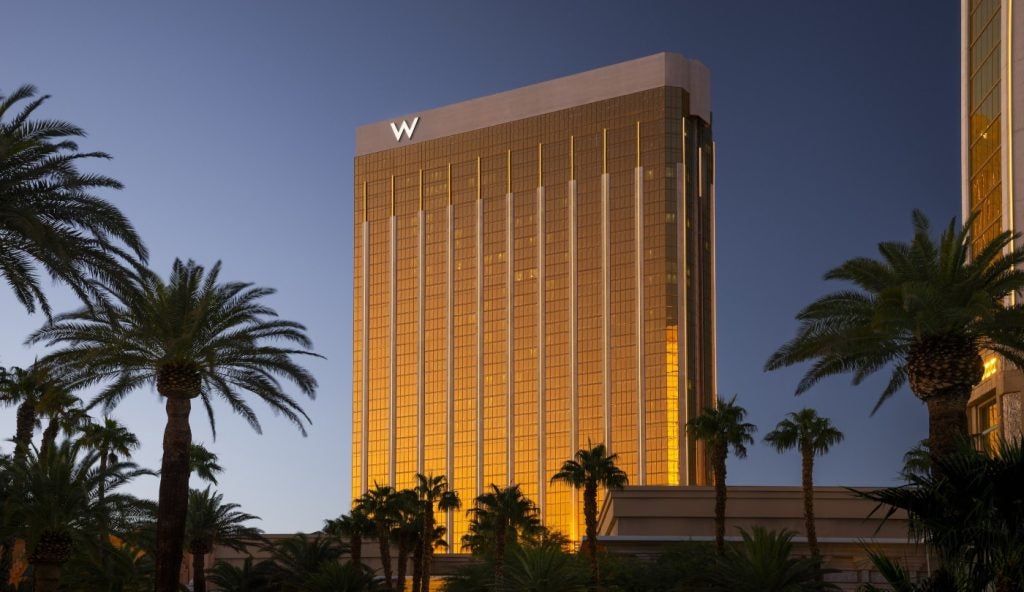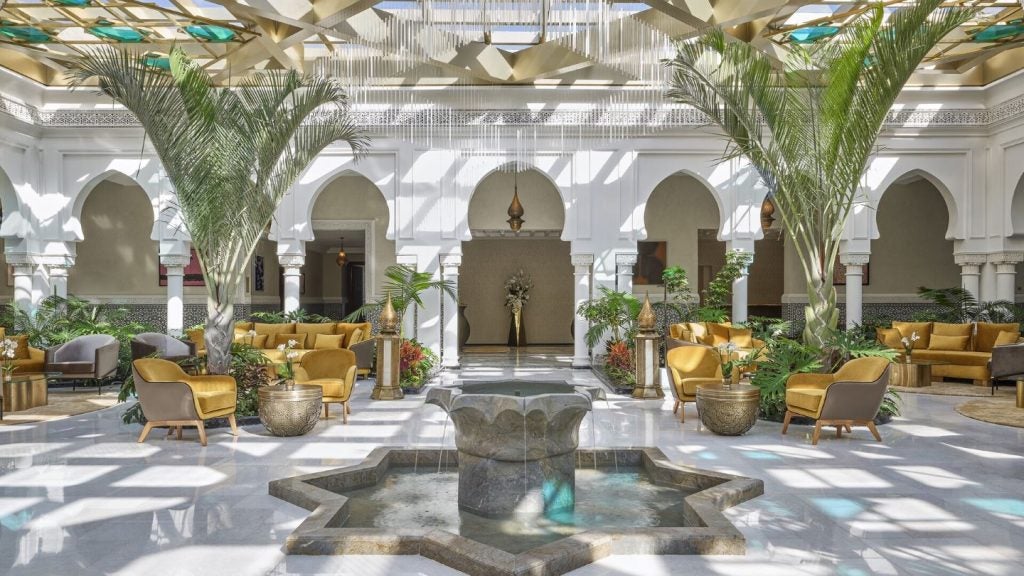
On 1 November 2006, one year on from its acquisition by Starwood Hotels,
California hosted Le Méridien’s worldwide relaunch. Acclaimed
lighting designer Thierry Dreyfus’ reimagining of the 24-storey Le
Méridien San Francisco as a tower of Mondrian-inspired light and colour
did more than slow traffic; it helped illuminate an entirely new brand
direction.
Although the Dreyfus alliance was conceived by Palais de Tokyo museum
founder and recently appointed Le Méridien cultural curator
Jérôme Sans, one could argue that Eva Ziegler was the
evening’s real star.
The senior vice president for Le Méridien, Ziegler is responsible for
overall marketing and operations leadership worldwide, and has been
particularly active in communicating and executing the brand vision across more
than 120 hotels in 52 countries. Innovations such as the appointment of Sans
reflect the direction in which she is taking the chain.
Despite experience with a host of Fortune 500 companies, and her appointment
in March 2006 following hot on the heels of the successful launch of the
Rendez-Vous Toyota European brand experience centre on the Champs
Élysées, Le Méridien is Ziegler’s first position
within the hospitality industry.
PF: You have described yourself as a “non-hotel person”. Has this
been a help or a hindrance during your first year in the role?
EZ: Arriving from the outside certainly gives you a fresh
perspective, but there are truisms that apply regardless of the industry. One
must understand one’s audience. Who are the guests? What are their needs?
How best can you make an emotional connection?
How well do you really know your competitors?
Access the most comprehensive Company Profiles on the market, powered by GlobalData. Save hours of research. Gain competitive edge.

Thank you!
Your download email will arrive shortly
Not ready to buy yet? Download a free sample
We are confident about the unique quality of our Company Profiles. However, we want you to make the most beneficial decision for your business, so we offer a free sample that you can download by submitting the below form
By GlobalDataMy experience with Toyota on the Champs Élysées was an
extremely good grounding because there I had been creating a brand experience
that was very much three-dimensional. That had also been about generating a
particular experience and feel.
PF: So what appealed about the role with Le Méridien?
EZ: From a marketing perspective it was enormously interesting.
Starwood has given itself the mission of transforming the hotel industry from a
functional business to a branding business. That is what I have been doing for
the last 15 years and there are not many opportunities for participating in
such a largescale transformation. Being part of a company looking to change an
entire industry is almost unique.
PF: Is the hospitality industry an exciting place to be in
general?
EZ: Yes. The hotel business offers countless opportunities to make an
impact, to make a difference and to differentiate. If you look at the guest
experience, it has so many touch points and can last for one, two or three
days. Compared with the consumption of a bottle of soda, one has much more
scope for making a lasting impression.
PF: How has the brand moved on since Starwood’s takeover?
EZ: When I look at how much has been done over the last year it seems
unbelievable. The first four and a half months were dedicated to integrating
the processes and systems of Le Méridien with those of Starwood. Things
like call centre structures being transferred and bringing Le
Méridien’s standalone website under the company umbrella. The
Moments Members scheme was transformed into the Starwood Preferred Guest (SPG)
programme, enabling access to its entire global portfolio.
The integration of these processes gave Le Méridien a backbone and a
base of operations that the brand had never had before. We saw increases on SPG
of 200% compared with March to December 2005, as well as the same increase in
terms of revenue generated. The impact has been huge.
PF: Does Le Méridien stand for the same principles as it did
before its 2005 takeover?
EZ: No, we repositioned the brand. At Starwood, there has been a move
to encapsulate each member of its portfolio in three core values, finding three
words that can distinguish each brand. For Le Méridien, these are
“chic”, “cultured” and “discovery”.
Chic captures the style of Le Méridien: a sophisticated, subtle,
forward-looking approach. Cultured is very much the content of the brand, based
around the four passion points of art, architecture, cuisine and fashion.
Discovery refers to the benefits for the customer, but we take it beyond the
strict interpretation of the word – discovery of a new destination
– and make it about providing a new pair of eyes.
PF: How is this achieved?
EZ: I believe that hiring Jérôme Sans is a major part of
that. We said we wanted to provide an experience based around culture. There
was a need to make this relevant and credible to the core audience that
we’d defined – “the creative guest”.
However, for the execution we needed an expert; it was not something that we
could do by ourselves. Jérôme has helped to define these cultural
experiences: suggesting partnerships, bringing people in who can push it
forward, and so on. His presence guarantees content that’s relevant,
ensures that it’s presented in a way that is chic and provides a new pair
of eyes. With the Paris de Tokyo Museum, Jérôme redefined the
concept of a contemporary art institution. We believe he’ll have a
similar impact at Le Méridien.
PF: Tell me about this creative guest.
EZ: The creative guest is an individualistic person who is curious by
nature and interested in learning something new. He or she is also well
travelled, so you cannot give them a sterilized experience that perhaps some
other chains are pursuing. We must stimulate our guests’ passion for art
and culture by providing experiences that inspire and stimulate them.
PF: Does the brand have to evolve alongside the guest?
EZ: A brand is never something static. It should never simply be
defined, executed and then remain the same for the next 30 years. It has to
evolve with the trends and reflect social and cultural developments.
However, the really big consumer trends don’t change within months.
There is a base out there that is curious and eager to learn something new.
There is also a real movement towards well-being and belonging, which other
Starwood brands tap into – well-being reflects Westin, while belonging is
a core principle at Sheraton. These are big trends that will remain for a long
time and can be approached accordingly.
PF: In approaching the rebranding, how much consultation has there
been with individual managers?
EZ: A vital component of brand development is ensuring it’s not
done in isolation. We have formed an advisory board, working alongside ten to
15 top Méridien general managers as we define the strategy, positioning,
audience, look and feel of the brand.
This was not a one-off meeting where we spoke briefly and then said “thank
you very much”. We are meeting regularly as well as having monthly conference
calls.
PF: Do you think the hotel industry has been slow in recognising the
importance of brand positioning?
EZ: At some point an industry will find itself in a position where,
from a functional perspective, one cannot differentiate between separate brands
anymore because imitation is so prevalent and quick. It then comes down to
price wars and will eventually eat into profit margins.
A fundamental question arises: how do we survive? In order to get out of
this purely functional, price-driven approach, you need to offer something
different, something of added value, something to emotionally connect with what
you desire. Once created, you’re offering something that cannot be copied
so easily and gives you a unique positioning within the market.
It is about becoming inimitable. Starwood started along this course two and
a half years ago and more and more brands are starting to tap into the
importance of identity. That can only be a good thing.







